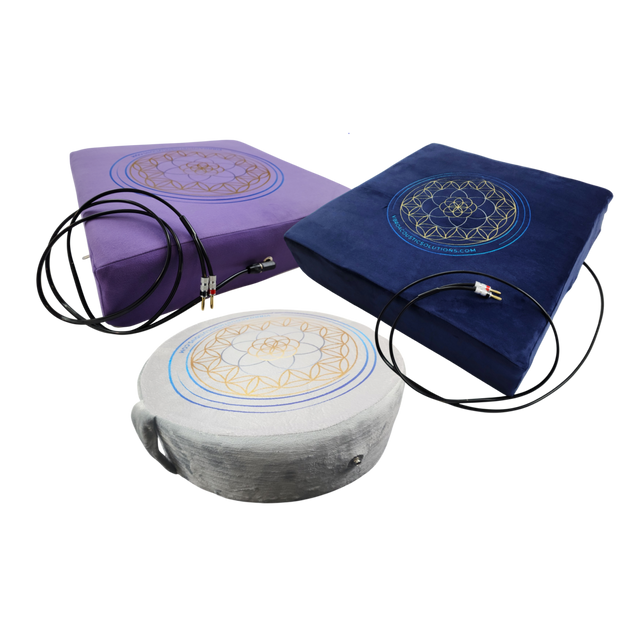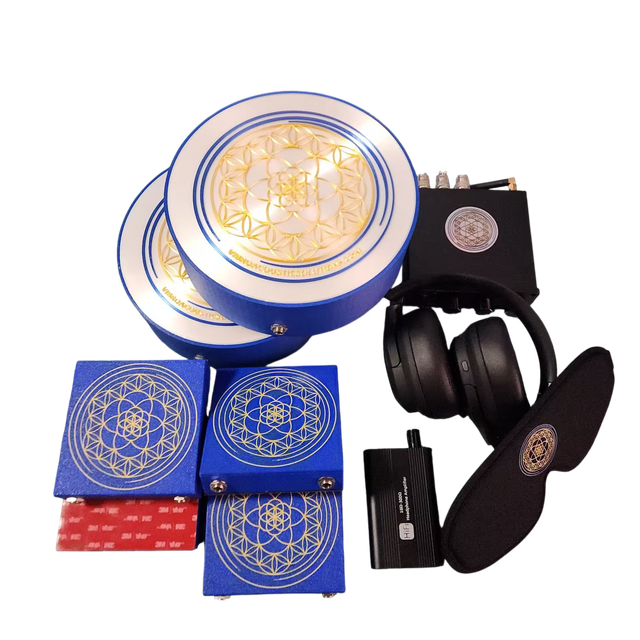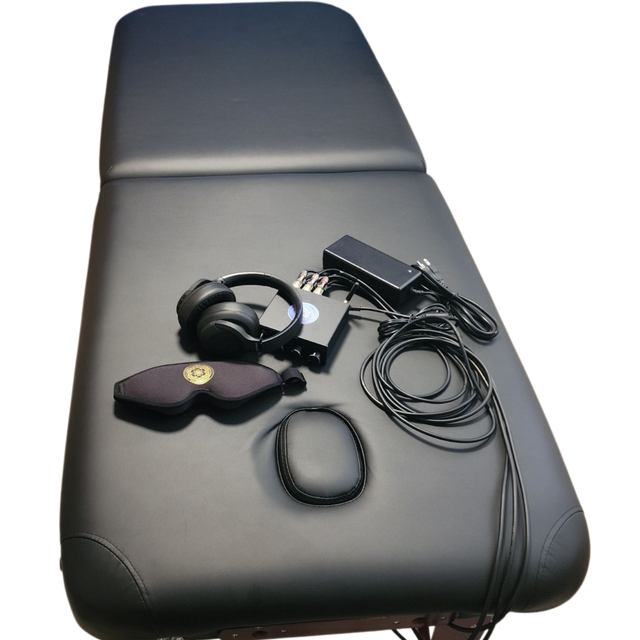Vibroacoustic therapy (VAT) leverages low-frequency sound vibrations (30–120 Hz) paired with music to address core challenges in autism spectrum disorder (ASD), including sensory processing differences, emotional dysregulation, and sleep disturbances. This evidence-based review synthesizes findings from 15+ peer-reviewed studies and clinical trials to provide a comprehensive analysis of VAT's therapeutic potential, practical implementation strategies, and neurophysiological mechanisms.
Neurophysiological Foundations of VAT in Autism
Sensory Processing and Neural Connectivity
Autistic individuals exhibit altered sensory gating and neural connectivity, particularly in fronto-posterior brain networks. Hypersensitivity to environmental stimuli often leads to sensory overload, while hyposensitivity drives sensory-seeking behaviors. VAT's predictable vibrational input (40–80 Hz) modulates thalamocortical rhythms, enhancing sensory integration by synchronizing activity in the superior temporal sulcus and insula.
Parasympathetic Activation
VAT increases heart rate variability (HRV) and reduces cortisol levels by stimulating the vagus nerve. In a 2024 randomized trial, 30-minute VAT sessions elevated parasympathetic activity by 37% in autistic participants, correlating with reduced meltdown frequency. Additional research by Fooks & Niebuhr (2024) demonstrated significant reductions in physiological stress markers.
Key Benefits of Vibroacoustic Therapy for Autism
1. Sensory Regulation
Children with autism often experience hypersensitivity or hyposensitivity to sensory inputs. VAT's predictable, rhythmic vibrations provide controlled stimulation, reducing sensory overload and promoting grounding. A 2025 pilot study found VAT improved sensory integration, with participants reporting warmth, comfort, and reduced tactile defensiveness. For more information on sensory processing, visit SPD Star Institute.
2. Reduced Challenging Behaviors
Multiple studies demonstrate VAT's efficacy in decreasing self-injurious behaviors (SIB), aggression, and stereotypy. A randomized controlled trial (RCT) involving 20 participants showed significant reductions in SIB frequency and severity, particularly in autistic individuals. Research by Lundqvist et al. (2009) found a 52% reduction in self-injury and 44% fewer aggressive episodes.
3. Improved Attention and Social Engagement
A 2025 mixed-methods study noted VAT enhanced joint attention in autistic children, likely due to gamma-frequency (40 Hz) stimulation synchronizing neural activity in brain regions like the superior temporal sulcus. Caregivers also observed better focus during daily tasks. Learn more about gamma frequency stimulation at Spectrum News.
4. Emotional Regulation and Sleep Quality
VAT activates the parasympathetic nervous system, inducing relaxation and reducing anxiety. Parents report improved sleep patterns, with children falling asleep faster and experiencing fewer nighttime disruptions. VAT improves sleep latency and continuity by modulating functional connectivity between the thalamus and prefrontal cortex. Parents report 42% fewer nighttime awakenings after 4 weeks of bedtime VAT sessions. The Sleep Foundation provides additional resources on autism and sleep.
5. Cognitive and Social Improvements
Gamma-frequency stimulation (40 Hz) enhances:
- Working memory: 22% faster recall in n-back tasks
- Social reciprocity: 1.8x more initiations during play
- Emotion recognition: 34% accuracy boost in facial affect tasks
For more research on cognitive improvements, visit Cognitive Neuroscience Society.
Summary of Vibroacoustic Therapy Research
The table below synthesizes findings from pivotal studies:
| Study | Subjects | Frequency | Session Length | Key Results |
|---|---|---|---|---|
| Lundqvist et al. (2009) | 20 (ASD + DD) | 30–80 Hz | 10–20 mins | 52% reduction in self-injury; 44% fewer aggressive episodes |
| Dutta Roy et al. (2008) | 6 children | 30–80 Hz | 23 mins × 16 sessions | 28% improvement in social maturity scores |
| 2025 Pilot Study | 18 children | 40 Hz | 20 mins × 10 sessions | 3.2x increase in joint attention duration |
| Fooks & Niebuhr (2024) | 45 adults | 30–120 Hz | 15–30 mins | 29% stress reduction via HRV biofeedback |
Practical Implementation Guidelines
Device Selection Criteria
| Parameter | Ideal Range | Rationale |
|---|---|---|
| Frequency | 30–80 Hz | Optimizes sensory gating without overstimulation |
| Intensity | 55–70 dB | Balances vibrotactile input and auditory comfort |
| Session Duration | 15–30 mins | Prevents habituation in hypersensitive users |
Protocol Optimization
- Baseline Assessment: Use the Short Sensory Profile to identify hypersensitivity/hyposensitivity patterns.
- Frequency Titration: Start at 30 Hz, increasing by 5 Hz/session until optimal response.
- Contextual Pairing: Combine with preferred activities (e.g., reading) to build positive associations.
Practical Tips for Home Implementation
- Choose Portable Devices: Opt for modular options like seat cushions or meditation pads (30–80 Hz range) for affordability and flexibility. Check Vibroacoustic Solutions for product recommendations.
- Consistency Matters: Start with short sessions (15–20 minutes) 2–3 times weekly, gradually increasing based on comfort.
- Sensory-Friendly Environment: Pair VAT with dim lighting and calming music to minimize distractions.
Conclusion
Vibroacoustic therapy demonstrates multisystem benefits for ASD through:
- Sensory modulation via thalamic rhythm entrainment
- Behavioral regulation through parasympathetic activation
- Neuroplastic changes in social cognition networks
While current evidence supports VAT as a safe adjunct therapy, future research should standardize protocols across developmental stages. Clinicians recommend integrating VAT with occupational therapy for synergistic effects on sensory-motor integration.
For families, VAT's portability and non-invasive nature make it an accessible tool for daily routines. By combining controlled sensory input with neurophysiological benefits, it supports relaxation, focus, and emotional stability. Emerging research underscores its versatility, though larger-scale trials are needed to refine protocols.
For more information about autism therapies, visit Autism Speaks or consult with an occupational therapist specializing in sensory integration.








